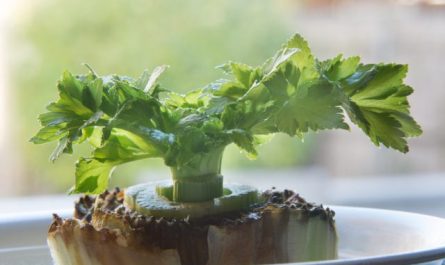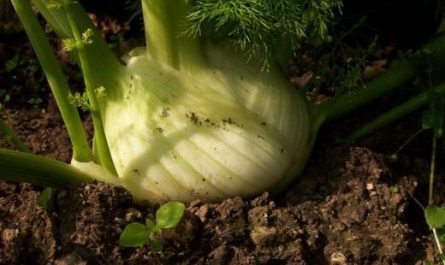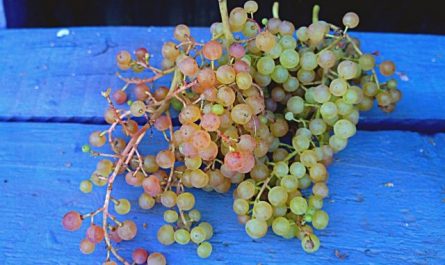The presence of a mole in a vegetable garden or in a garden has a dual meaning. Many gardeners tend to think that a mole is beneficial, however, despite this, they are certainly pests. These animals can easily destroy any plant, and ugly mounds of earth, to put it mildly, do not decorate either beds, or flower beds, or, especially, a lawn. In this article, we will not only tell you how to deal with moles in the garden and vegetable garden, but also try to explain the natural habits of this uninvited guest.

Contents:
What does a mole look like?
Moles (except for shrew moles living on the surface) are adapted to an underground, burrowing lifestyle. Their bodies are elongated, rounded, covered with thick, smooth, velvety fur. The mole’s fur has a unique property – its fur grows straight, and is not oriented in a certain direction. This allows the mole to easily move underground in any direction – the fur lies freely both forward and backward.
The mole’s color is uniform: black, black-brown or dark gray. The limbs are shortened, the paws are widened like a spade; the claws are large, flattened on top. The hind limbs are usually weaker than the front ones. The tail is short. The head is small and elongated. The nose is extended into a mobile proboscis. The neck is almost invisible from the outside. The auricles are absent or very small. Moles have poor vision; in some species, the eyes are covered with skin. The sense of smell and touch are well developed.
How do moles live?
The mole lives underground in holes and lairs dug by itself and digs in the ground with extreme speed, throwing the dug-up earth to the surface from time to time (“mole heaps”, “mole holes”). Actually, the mole’s dwelling is usually located in a mound and consists mainly of a lower ring passage, a narrower upper one and a lair lying inside them, lined with soft substances.
There are about 10 radial passages connected to the outer ring passage, 5-6 of which lead to the upper ring passage, and 3 of the last passages lead to the lair. It is also connected by a special passage with one of the radial passages. Sometimes one or even both ring passages may be missing from a mole’s dwelling.
The female’s lair is arranged at the intersection of several passages and is also lined with soft substances. Here the female gives birth to 3-5, rarely 6 or 7 naked cubs in April-June. Sometimes she gives birth again in August. Mating is preceded by fierce fights between males.
The mole feeds exclusively on animals and, mainly, on insect larvae, earthworms, slugs, woodlice, as well as mice, frogs, lizards, snakes, etc. It is distinguished by its great predatory nature and gluttony. And if two moles are left without food even for a short time in a closed room, then a fight begins between them and the winner eats the loser.
In search of prey, the mole is guided mainly by smell, as well as very subtle touch and hearing. Its vision is weak, but the mole still sees and uses its vision, for example, when swimming across water. It swims well. In order to have water for drinking, the mole makes passages to streams and ponds or digs deep vertical passages.
In winter, the mole does not hibernate, but simply moves to deeper layers of the earth.
The blind mole (Talpa coecca Savi), which inhabits southern France, Italy, Dalmatia, and Greece, and is distinguished chiefly by its lighter colour and its completely closed eyes, appears to be only a variety of the common mole.
How to identify a pest: a mole or a rodent?
Mole tunnels are not visible in lawns, but moles have a destructive effect on the root systems of garden plants. Moles hide in their underground fortresses all year round. Gardeners and lawn enthusiasts are usually acutely aware of the need to combat moles in the spring and fall, especially after the rainy season, when moles pile up mounds of dirt on the surface of the ground.

Moles are carnivores: their diet consists of insect larvae, adult insects, and worms. Neither the American mole nor the star-nosed mole are plant-eating rodents. So the damage to plants you observe is unlikely to be caused by moles. Of course, rodents use mole tunnels to attack plants underground, thus recruiting moles as accomplices in the crime.
Moles build two types of tunnels or burrows in the ground. One type of tunnel is just below the surface of the ground. These are feeding tunnels and can be seen as raised surfaces, like ridges in the lawn. The other type of tunnel runs deeper and allows moles to connect feeding tunnels into a single network. Landowners often see mounds of earth on their property that resemble small volcanoes from the deep tunneling.
Since moles are not the only pests responsible for tunnels under lawns and in gardens, they are often confused with other pests such as gophers and voles. Since pests are rarely seen, common sense dictates that you should be more careful to identify pests by the tracks they leave behind, rather than waiting until you see them in person. After all, this may never happen! And correctly identifying the pest is the first step to effective pest control.
Moles leave mounds that look like volcanoes, gophers make mounds that resemble a horseshoe. Voles do not leave mounds on the surface at all. However, mice build well-defined, visible tunnels near or under the surface, about 5 cm wide. Vole tunnels are the result of eating grass stalks and repeatedly walking their little paws along the same path. And if any pest can make a path, it is undoubtedly a vole. Rabbits can’t even dream of the fertility of these rodents.
Modern chemical and mechanical methods of mole control
Traps, pesticides and repellents
The best way to get rid of moles is to use traps, poisons, and repellents. There are traps designed specifically to kill moles, and they have scary names like the scissors trap, the choke trap, or the harpoon trap. You can also use traps that allow you to catch the mole alive, but then you are left with the problem of what to do with the trapped guest.
Traps set early in the spring will help eliminate females that are ready to bear offspring, effectively reducing the problem later on. Choosing the right location for the trap is very important. Most likely, you will want to set the trap near an active feeding tunnel (the feeding tunnels are located closer to the surface of the ground, as mentioned earlier). How to determine which of the feeding tunnels the mole is actively using:
- Use your hand or a shovel to compact the areas of soil raised by the mole.
- Mark these parts with something bright (old tape on a stick as a flag) to make them easier to find later.
- After 12-24 hours, check these areas again. If the surface is bulging again, then you know the mole is considering this tunnel as active. This is where you should set the trap.
- Cut the turf over the active tunnel and remove the soil up to the mole’s tunnel. Moles have poor eyesight, so they will walk right into the trap. But while they have poor eyesight, they have very good senses. This means you can’t leave any dirt on the way to the trap, or the mole will find it and turn back.
When using repellents or poisons, you must water the area where you are using them frequently to allow the repellent or poison to penetrate the soil. Water the soil thoroughly before and after applying the repellent or poison if the specific product’s instructions call for it. You may need to reapply the product.
Poisoned baits
Zinc phosphide is widely used as a pesticide to control moles. Proper placement of the bait is the key to success. Identify the main tunnel with a feeler gauge or iron rod. Gently rotate the feeler gauge to make the hole wider and drop a teaspoon of poisoned bait into the hole so that it falls to the bottom of the tunnel. Cover the hole with a lump of soil. Three or four baits are enough for a small area with fresh molehills.
Don’t expect immediate results. If additional molehills appear after a few days, re-lay out the poisoned bait. The mole should find the bait in its labyrinth of underground passages and eat it.
Natural Pest Controls
Planting “live” repellents
Many successful mole control stories are based on planting certain plants that the moles cannot stand. Of course, this alternative method is less reliable than using traps, pesticides or repellents, but it is also more fun. The advantage is that these are attractive plants that are worth growing on their own. So if you want to get rid of moles but do not expect quick results, using plants as a natural remedy is just for you.

Certain bulbous plants are thought to repel moles. One of these is the well-known daffodil. Two others are also classic spring-flowering plants, although not as well known as the daffodil: Scilla siberica and Fritillaria imperialis.
Scilla has drooping bell-shaped flowers in lavender, blue, white or pink. Over the years, scilla spreads and covers the area. Yellow Imperial Fritillary (Fritillaria imperialis ‘Lutea) has 6 to 8 drooping yellow flowers. The bulbs are said to smell like fox, which is certainly not a pleasant smell for moles. These plants grow up to 8 cm tall.
The Allium family includes not only garlic, onions, leeks, chives and shallots, but also the ornamental flowering onion. The latter is often simply called Allium. It is an unusual flowering plant that grows between 15 and 150 cm tall. Garlic is also considered a mole repellent, but from an aesthetic point of view, Allium may be a better choice for you.
Allium giganteum is one of the tall ornamental onions, reaching a height of 90-150 cm. The flowers are purple and form round racemes 10-15 cm wide. Since its leaves die back in early summer, you will probably want to cover it with another plant. To compensate for this, simply plant other plants of the onion family. The bulbs can be planted in autumn or spring. At a depth of 15 cm.
Marigolds (Tagetes minuta) are a pungent-smelling plant that is widely used for companion plantings due to its ability to repel pests.
Using companion plants is an example of organic methods of mole control. Gardeners who prefer such methods should not limit themselves to the common marigold. A couple of plants from this group with an exotic touch can be named, for example, caper spurge and castor oil plant.
One of them has gained fame as a “living” repellent, and is often called the “mole plant.” This is the caper spurge (Euphorbia lathyris), an annual plant that effectively reproduces by self-seeding. The mole plant has an impressive structure and is often grown as an ornamental plant — upright with lanceolate leaves. Its leaves are marked with graceful white veins. When the stem is cut, white juice flows. Most likely, the smell of this poisonous, caustic juice is what repels moles.
And finally, the castor oil plant (Ricinus communis). Also known as the castor oil plant. Almost all commercial repellents contain castor oil. It was once used as a laxative. And it seems to have a laxative effect on moles, which they don’t like.
Warning: Castor beans, like milkweed, are poisonous. Neither plant should be grown where there are small children.
In temperate climate zones, castor oil plant is considered an annual plant. It grows quickly and can reach 4,5 m in height in just one season. Therefore, it can be used as a fast-growing screening (hedge). A good option for those who do not have time to wait for years for the bushes to grow to the desired size. Castor oil plant has large star-shaped leaves, which make it a very attractive garden specimen.
“Pan” or “jar” trap
Among the most effective simple “home” traps, the “saucepan” or “jar” method is noted. It consists of the following: in the middle of the mole’s active passage, below its level, a saucepan or a three-liter jar (with or without water) is dug in. A garden drill is convenient for this purpose. Then the hole with the saucepan is covered from the light from above, the mole goes along the passage, falls into the saucepan (or jar) and drowns, or cannot get out.
My friends, already pretty tired of mole holes in their garden, decided to act. To scare them away, they put empty plastic bottles on sticks and they, in turn, rattled in the wind. I must say, the pests decreased. And what methods do you use to fight these animals?




















